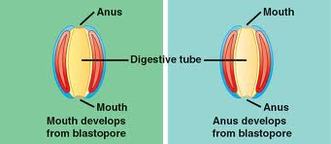

Sea cucumbers of class Holothuroidea are extended in the oral-aboral axis and have five rows of tube feet. Both of these species are suspension feeders. Sea lilies and feather stars are examples of Crinoidea. These echinoderms do not have arms, but are hemispherical or flattened with five rows of tube feet that help them in slow movement tube feet are extruded through pores of a continuous internal shell called a test. Sea urchins and sand dollars are examples of Echinoidea. Brittle stars move by lashing out their arms or wrapping them around objects and pulling themselves forward.

Unlike sea stars, which have plump arms, brittle stars have long, thin arms that are sharply demarcated from the central disk. Explore the sea star’s body plan () up close, watch one move across the seafloor, and see it devour a mussel.īrittle stars belong to the class Ophiuroidea. This process can essentially liquefy the prey and make digestion easier. Sea stars have two stomachs, one of which can protrude through their mouths and secrete digestive juices into or onto prey, even before ingestion. Sea stars use their tube feet not only for gripping surfaces but also for grasping prey. The key characteristic of sea stars that distinguishes them from other echinoderm classes includes thick arms (ambulacra) that extend from a central disk where organs penetrate into the arms. They come in a large variety of shapes, colors, and sizes, with more than 1,800 species known so far. The most well-known echinoderms are members of class Asteroidea, or sea stars. This phylum is divided into five extant classes: Asteroidea (sea stars), Ophiuroidea (brittle stars), Echinoidea (sea urchins and sand dollars), Crinoidea (sea lilies or feather stars), and Holothuroidea (sea cucumbers) (Fig. By moving water through the unique water vascular system, the echinoderm can move and force open mollusk shells during feeding. The ring canal connects the radial canals (there are five in a pentaradial animal), and the radial canals move water into the ampullae, which have tube feet through which the water moves. From there, it passes into the stone canal, which moves water into the ring canal. Water enters the madreporite on the aboral side of the echinoderm. By using hydrostatic pressure, the animal can either protrude or retract the tube feet. These tube feet can expand or contract based on the volume of water present in the system of that arm. The water vascular system also projects from holes in the skeleton in the form of tube feet. Water circulates through these structures and facilitates gaseous exchange as well as nutrition, predation, and locomotion. The fates of embryonic cells in deuterostomes can be altered if they are experimentally moved to a different location in the embryo due to indeterminate cleavage in early embryogenesis.Įchinoderms possess a unique ambulacral or water vascular system, consisting of a central ring canal and radial canals that extend along each arm. The blastopore forms the anus of the alimentary system in the juvenile and adult forms. The resultant coelom is termed an enterocoelom. The archenteron develops into the alimentary canal, and a mouth opening is formed by invagination of ectoderm at the pole opposite the blastopore of the gastrula. These buds, known as coelomic pouches, fuse to form the coelomic cavity, as they eventually separate from the endodermal layer. The endodermal lining of the archenteron (or the primitive gut) forms membrane protrusions that bud off and become the mesodermal layer. In deuterostomes, internal pockets of the endodermal lining called the archenteron fuse to form the coelom.
#In deuterostomes the forms from the blastopore series
There are a series of other developmental characteristics that differ between protostomes and deuterostomes, including the mode of formation of the coelom and the early cell division of the embryo. The word deuterostome comes from the Greek word meaning “mouth second,” indicating that the anus is the first to develop. Recall that protostome and deuterostomes differ in certain aspects of their embryonic development, and they are named based on which opening of the digestive cavity develops first. The phyla Echinodermata and Chordata (the phylum in which humans are placed) both belong to the superphylum Deuterostomia.


 0 kommentar(er)
0 kommentar(er)
